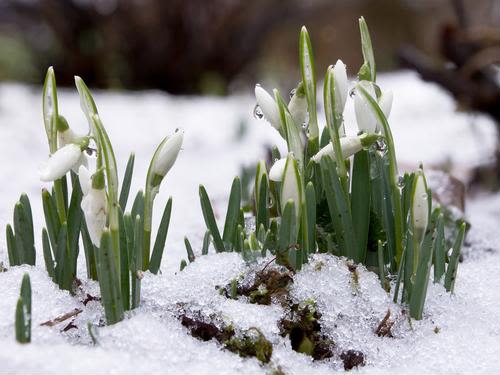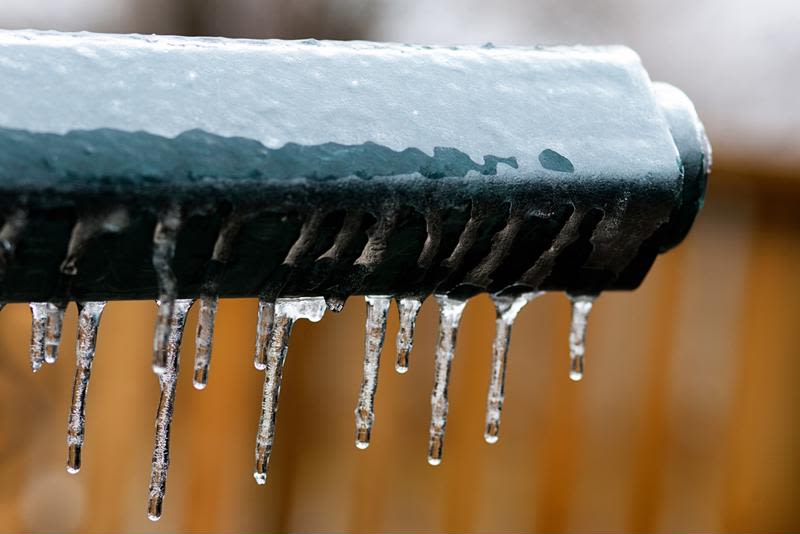- Home
- Resources
- Amerhart Insider Blog
- Project Inspiration
- Preparing a home exterior for spring
Preparing a home exterior for spring

The long dark of the winter months is ending and the first signs of the new season are starting to show. The sun hangs around past five o'clock in the evening, the temperature occasionally rises to a balmy 40 degrees, and, you're not sure, but you think you heard a robin the other day. Spring is coming and that means a lot of good news. It also translates to an increase in moisture, a surplus of pests, and other new home complications.
When talking to a client about home renovations in the new year, make sure they plan for the changing seasons.
Moisture and expansion
Most places see a lot of snow during the winter. It clogs roads and closes schools, forcing people to spend time indoors. However, for all the headaches snow causes, it does not cause flooding, at least not on its own. Winter is a dry season - relatively speaking. According to Comfort Solutions, winter air is simply too cold to hold water vapor. However, as soon as the temperature starts rising above freezing, this changes.
It is basic science that the cold causes contraction and heat leads to expansion. What some clients may not know, however, how penetrative a force water can be. It is constantly at the home exterior, trying to wear it down and seep in. Winter can exacerbate this as winter storms can be damaging to homes and exteriors, in particular. If the snow gets under a shingle, it will stay there.
Spring, however, brings the thaw and water works differently than most everything else. Water actually expands as it freezes. This is what makes water so damaging to certain kinds of wooden exteriors. It gets absorbed in liquid form and then expands when it freezes. In winter, this reaction isn't happening often as it simply isn't warm enough. Spring and Fall bring temperatures that cycle from above to below freezing, making these the two most damaging seasons in terms of exterior water temperature.
 Water that freezes and unfreezes constantly can cause many problems around a house.
Water that freezes and unfreezes constantly can cause many problems around a house.
However, your clients need not have a total headache. Certain materials do a very nice job of keeping out moisture. We offer PVC exteriors that do not take in any moisture at all. These carry the appearance of wood without worry about dampness.
That said, you should be careful with PVC installation. While it does not expand or contract due to moisture, temperature still plays a role. Builder Online stated that PVC trim can change size by as much as an eighth of an inch throughout the year - depending on temperature extremes. You must account for this during installation. A broken glue joint can weaken the exterior and allow for more problems down the road.
Bugs and rodents
Another advantage of PVC is its plastic composition. Wood, especially older and un-kept wood, can start looking appealing to ants, termites, and other insects. The good news is that PVC never looks appetizing. If the bugs damage it, it is due to them trying to get around or through it to the wood inside. However, only one species of termite is known to do this, according to Termirepel.
In addition, animals like mice are drawn to decaying wood due to its compromised structure. Pieces can be easily broken off to gain entrance or for use in a nest. While these rodents love to sharpen their teeth on PVC covered wires, the siding is too wide for them to bite into. PVC trim also does not fall apart in the absence of maintenance the way wood does.
Increased plant life
Gutters need to be cleaned or replaced, especially in the Northeast. While your clients may not want to hear it, make them aware that plants can actually take root in gutters and grow. Not only does this look horrible, but it is a problem that will eventually damage the roof and connecting parts of the house.
In addition, take the time to remind your clients that any cracks, particularly those in the basement, should be sealed. If you're dealing with a budget-conscious household, you can suggest a compromise, letting clients perform basic DIY maintenance while you improve the siding and correct other water damage.
Spring is a beautiful time of year, but the change in seasons is problematic for every built structure. These are turbulent days where the varying temperature can cause many issues. Educate your clients on the potential problems that spring brings, as well as how to best address them.



















